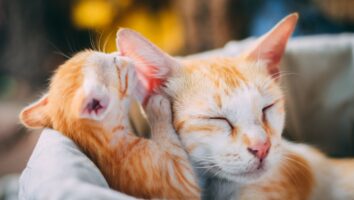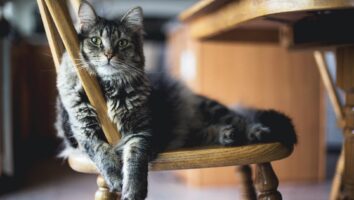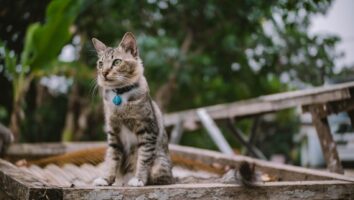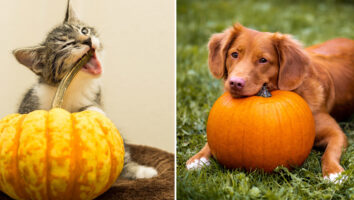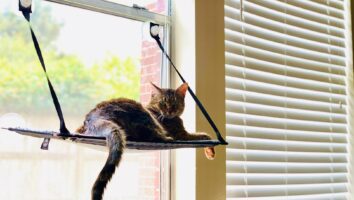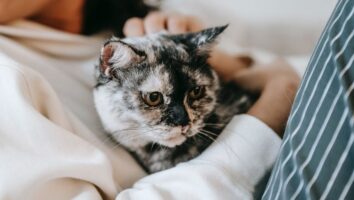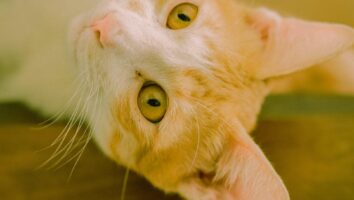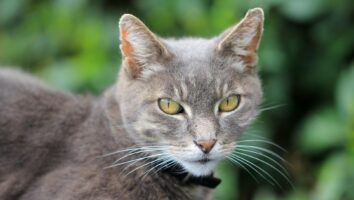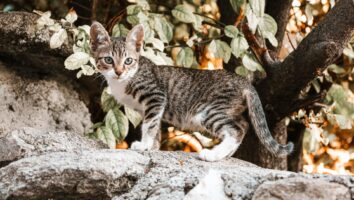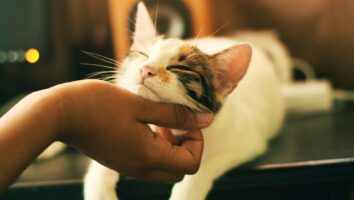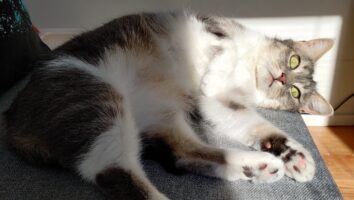Cat
Dog and cat bites
The mouths of dogs and cats are filled with bacteria which can cause serious infections if a bite occurs. In addition the teeth can penetrate into tissue and cause both superficial and deeper, more…
How to clean your cat’s ears
Now and then your cat may have waxy ears that need cleaning. Not sure how to do it or what to use? Read our article to learn how to do this with the best results.
Top tips for cat litter trays
Choosing the right litter tray for your cat is so important. From size, shape, location and substrate material, all of these things should be considered when choosing a tray. Read more about the…
Why is my cat scratching at the furniture?
Scratching is a natural and very important behaviour for the cat. However problems can arise when cats scratch furniture or other objects in the house that the owner deems undesirable.
How to make your garden cat friendly
Many cat owners spend time making their home more cat friendly, but often do not consider how cat friendly their garden is. If you have a garden where other cats from the neighbourhood frequent,…
Halloween hazards and Bonfire Night - how to keep your pet safe
Halloween can be a wonderful time of year with lots of sweets and chocolates in abundance, creative costumes and a great time had by all. However our pets may feel very different, with dangers posed…
Pros and cons of keeping a cat indoors
For most cat owners, it is an important decision on whether you should keep your cat indoors or allow them access to the outside world. There are pros and cons of both options which this article…
Top five health problems in older cats
As cats age, they can be more prone to certain age related disease processes. Early detection and management of these age related issues leads to a better quality of life for older cats. Read more…
Why does my vet want a stool sample from my pet?
Has your vet asked for a poo (faecal) sample from your pet? Have you ever wondered what these samples can tell us? Our vet explains how to collect a suitable sample and what tests can be done to…
Is my cat drinking too much water?
Cats drink varying amounts of water depending on their diet. However, if you notice that your cat has increased their normal intake, it could be a clue to a number of internal disease processes.…
Haemorrhagic gastro-enteritis (HGE) in dogs and cats
Haemorrhagic gastro-enteritis (HGE) is a syndrome where a dog or cat passes diarrhoea and/or vomit containing fresh red blood. Sometimes they can have profuse watery bright red diarrhoea and it can…
Spots on the chin: cat acne and how to treat it
Feline acne, also known as follicular keratinisation, is a common skin condition that usually appears on the chin area. For this reason, it is also sometimes referred to as cat chin acne. Some cats…
Eyelid lumps in cats
When a tumour grows on the eyelid it presents different challenges to other locations in the body. An eyelid tumour may appear as a lump on your cat’s eyelid. Eyelid tumours in cats are more likely…
Feeding my kitten
Kittens have special nutritional needs, unlike puppies, in that they are true meat eaters (carnivores). Getting early feeding right can help your kitten to grow correctly with strong bones and teeth…
Pancreatitis in cats
The pancreas is an organ in the body located close to the stomach. It produces enzymes that assist in the digestion of food and hormones such as insulin that regulate sugar levels. When inflammation…
Megacolon in cats
Megacolon in cats is a term to describe an abnormality of the colon, which is the last part of the gut before the anus. With megacolon, the colon loses its motility, which is its ability to move…
EPI (Exocrine Pancreatic Insufficiency) in dogs and cats
Exocrine Pancreatic Insufficiency (EPI) is a condition which can affect both dogs and cats, but is more commonly seen in dogs. An insufficient amount of digestive enzymes are made in the gut. These…
Flatulence (farting) in dogs and cats
All animals produce gas in their gastrointestinal tract. It is normally expelled by the body either in the forms of farting from the bottom, or burping (eructation) from the mouth. Some flatulence…







